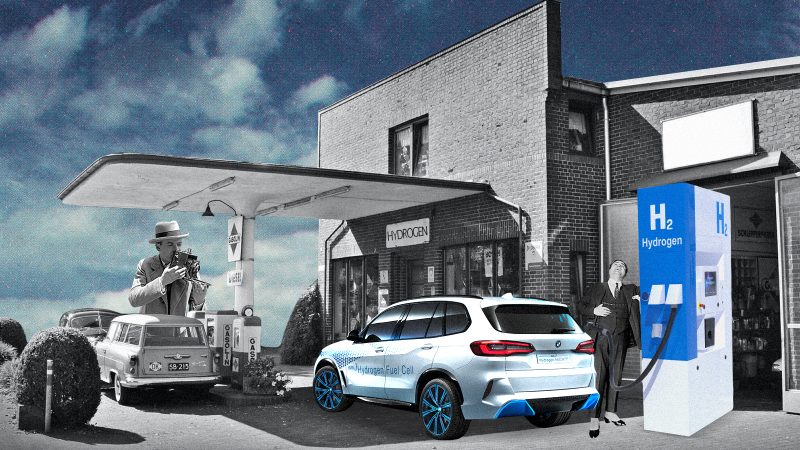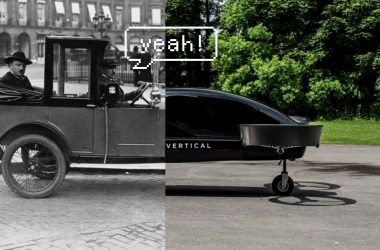Most European countries are for full prohibition of production and sales of cars with gasoline and diesel based engines by 2030. As of now, it is impossible to predict how realistic such deadlines are, but no one questions the fact that the ecologic transport will, sooner or later, displace the traditional ICE (Internal Combustion Engine). The principal competitor of electric cars in a new niche are hydrogen based cars. They also do not emit the carbon dioxide, but are fueled faster and almost don’t require any maintenance, while their batteries can work 2-3 times longer.
History and the working principle of hydrogen engine
For the first time this type of engine appeared in 1806, in France, and the patent for a hydrogen engine was received in Great Britain in 1841. 11 years later, in Germany, the first ICE was created, adapted to work on the mixture of air and hydrogen.
The technology of transitioning an ICE to work, using hydrogen, is widely available, in besieged Leningrad, because of a shortage of gasoline, a few hundreds of cars as well as some industrial equipment were modified in such a way. But the creation of an economically viable engine, working exclusively on hydrogen fuel elements, is a much harder task.
In 1996, General Motors created the concept of Electrovan, which had a driving capacity of 200 km without the need to charge, but only a single copy was created and it never left its factory. Subsequently, there were a few more attempts to create a fully hydrogen vehicle, but only a few reached the stage of mass production and implementation.

The working principle of a car with a hydrogen engine:
- The fuel tank of a car is filled with compressed hydrogen.
- Fuel goes into the generator, which has two chambers with anode and cathode, divided by a membrane, the second chamber has the oxygen going into it from an air intake device or a special tank.
- Electrodes of the membrane are covered with a catalyst (usually platinum), which starts the chemical reaction. As a result, electricity gets generated, needed to be able to drive the car, as well as the water vapor, going into the exhaust pipe.
The key problems, impeding the development of the technology
The main obstacles to the advancement of hydrogen-fueled vehicles are undeveloped technology, economic difficulties and insufficient interest from governments and big companies. If the transition to hydrogen cars was economically justified, then, with support of the government, it could happen fairly quickly (as it did with the recent transition to electric cars in China). But until the main problems of hydrogen cars are solved, which I will talk about in detail below, it is too early to even talk about the beginning of global implementation of this technology.
The difficulties of fuel production and storage
The cost of hydrogen fuel is a few times higher than diesel and gasoline, and its production requires very high energy costs. Pure hydrogen is almost never found in nature. Most times, it’s chemically produced from gas. Usually, methane or propane are used as the source of hydrogen. Gas gets mixed with water vapor. The reaction happens with the use of a catalyst and under a very high temperature (from 700 to 1000 degrees). But still, during the reaction, there is an emission of dangerous for ecology, carbon dioxide, which is the reason for starting the fight against the gasoline and diesel ICEs.
There are also alternative ways of producing hydrogen, but currently, they are still in the concept phase:
- From lignite. This material doesn’t cost much, but it is highly flammable, so the process of transporting it can get complicated. But if you start producing hydrogen in regions with lignite, it is possible to get a relatively cheap fuel.
- From industrial byproducts. According to studies conducted by car manufacturers, industrial companies produce such a huge amount of hydrogen in a year, that it would be enough for 300-750 thousand cars (the precise number will depend on the engine’s design, consumption, operating characteristics and other secondary factors).
In 2017, groups of scientists from the University of New South Wales, Griffith University, and Swinburne University of Technology presented a new technology for the electrolysis of water using iron and nickel as catalysts. Under certain conditions, these inexpensive metals are able to accelerate the chemical reaction and reduce power consumption just as effectively as traditional catalysts made of platinum, iridium and ruthenium.

Hydrogen has the highest volatility among other chemical elements, which makes it very difficult to store. Vapor can seep through even the smallest of gaps. For example, even a specialized car tank, adapted for hydrogen fuel can lose up to 50% of its volume in just ten days due to evaporation. This problem has almost been solved by now, but still, the storage and transportation of hydrogen are still coupled with certain difficulties.
High price of cars and maintenance
Unlike electric engines, which require almost no maintenance, the conventional ICEs, powered only by hydrogen fuel, the same as gasoline engines, will need a periodic replacement of spark plugs, oil, and other preventive maintenance. Many automakers have already begun to produce engines that are powered exclusively by hydrogen, but for now they stand out because of their high cost because of the use of rare metals in the energy conversion reaction.
For example, BMW, in 2020, along with hybrid gasoline-hydrogen “sevens”, presented a pre-production BMW X5 concept, working exclusively on a battery with hydrogen fuel, without using ICE. Companies BMW and Toyota worked together on a project that was named iHydrogen NEXT. The model is equipped with a fifth-generation eDrive engine and two tanks, into which, under the pressure of 700 bar, six kilograms of gas-like hydrogen are pumped. The total output of the power unit is 275 kilowatts. At the current moment, the model is still only a concept, but, according to developers’ statements, the car will enter serial production closer to 2030.

Explosiveness
Hydrogen is highly volatile, doesn’t have smell and is easily flammable, so both the storage of fuel, as well as use of hydrogen vehicles are always coupled with a risk of explosion. To transport hydrogen or store it at gas stations, increased safety precautions are required. Not only does it make the use of the new fuel more expensive, but it can also endanger lives if not handled properly.
For example, in the summer of 2019, a hydrogen gas station in Norway exploded because of a hydrogen leak. As a result of the explosion, two people were lightly injured (the shock wave triggered the airbags in their cars). After this incident, the entire network of these gas stations was closed until the investigation, and Hyundai and Toyota announced the suspension of sales of hydrogen-powered cars in Norway until full safety of the gas stations was ensured.

Also, due to the lack of smell of hydrogen, it is impossible to detect its leakage before the explosion. Toyota, Honda and other car manufacturers involved in the development of hydrogen cars particularly emphasize the safety of their fuel tanks, but no one can give a hundred percent guarantee of the safety of their tanks in a severe car accident.
The absence of infrastructure
Even if the safety issue will get solved, the high cost of building gas stations is still a problem. Hydrogen equipment is expensive, and the cost of building one hydrogen filling station is about 10 times higher than building a traditional complex, but still the network of filling stations around the world is gradually expanding.
In 2015, in Berlin, a joint company was established to develop a network of hydrogen filling stations H2 MOBILITY, whose members are major fuel and car manufacturers, investing their own resources in the development of infrastructure: Air Liquide, OMV, Shell, Total Daimler, BMW, Volkswagen, Honda, Toyota.
Clean Energy Partnership is a German cooperative project to demonstrate and popularize hydrogen all over the world, one of the members of which is the Volkswagen Group. They are also showing interest in developing a network of hydrogen filling stations.
In the US, hydrogen filling stations started appearing as early as 2020, at which drivers can refuel their cars on their own (there are only around a dozen at the moment). Before that, automation or specifically trained operators were responsible for the process, since self-fueling could not ensure sufficient explosion safety.
Japan is placing a special bet on hydrogen. Japan H2 Mobility LLC, an alliance of 11 major national car manufacturers and energy companies, has stated its intention to build 80 hydrogen refueling stations by the end of 2022, doubling the number of all complexes located throughout the country.
Specifics of exploitation
Most ordinary car owners are much less concerned about ecology and technical achievements than about the convenience and efficiency of using their own vehicle. And at the moment, cars with traditional gasoline or diesel based internal combustion engines are still above the competition.
Even if we do not take into account the critically low number of hydrogen filling stations, which is also an obstacle to the popularization of the technology, there are also certain specifics of exploitation. A car with a conventional ICE can be fully fueled within a few minutes and is able to operate in a wide range of environmental temperatures, while hydrogen cars have difficulties with cold starts.
In 2021, the Hyundai Nexo was announced, one of the few mass-produced hybrid hydrogen crossovers that, according to the developers’ claims, is capable of providing a trouble-free engine starting at -6oC. But the work in this direction began much earlier. Back in 2006, the creators of the Chevrolet Equinox, which also uses hydrogen as fuel, stated that the car’s engine can run even at -25oC. In 2015, the tests of Toyota hydrogen prototype sedan were conducted in Yellowknife, Canada, where the thermometer can go down to -30 degrees Celsius in winter.

Considering these and some other difficulties surrounding hydrogen cars, we can only consider them a promising technology for now. Engineers and governments have many more problems to solve before hydrogen cars can compete on an equal footing with electric cars, powered by ICE.








